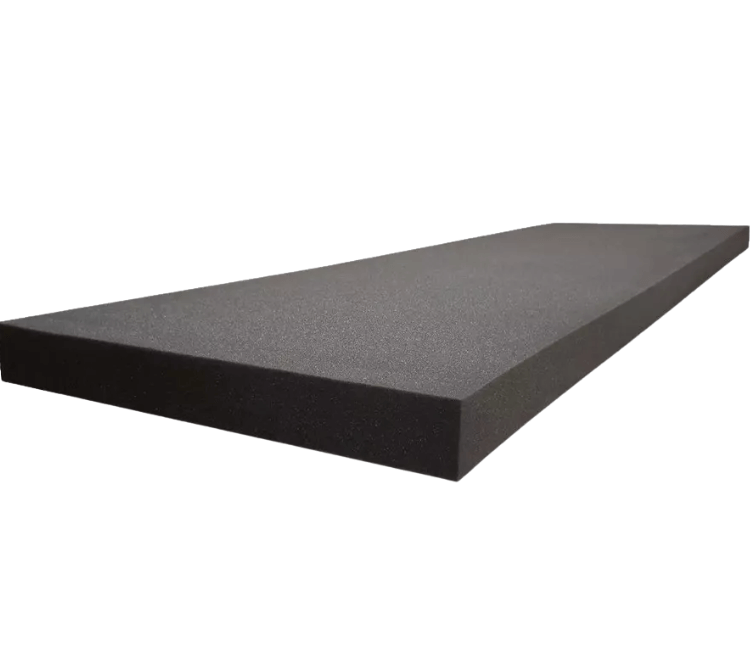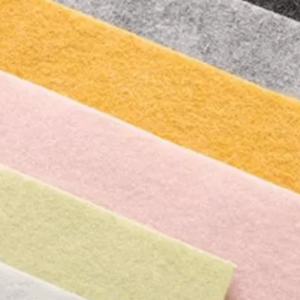Polyurethane Flat Acoustic Foam Panels– High NRC Noise Reduction
Our Flat Acoustic Foam Panels at Gitco-sa.com offer excellent sound absorption across a wide frequency range. Lightweight, fiber-free, and easy to install in offices, studios, classrooms, and more. Explore our range of thicknesses and sizes.
Description
Polyurethane flat Acoustic Foam Panels available at Gitco-sa.com offer a high absorptive surface area for effective sound control. These plain panels, sometimes featuring a subtle sound wave pattern, are designed to be high-performance sound absorbers, particularly effective across a broad range of frequencies. Being constructed from open-cell polyurethane acoustic foam, they are fiber-free and lightweight, making them a practical and easy-to-install solution for improving acoustics in numerous environments.
Acoustic foam attenuates airborne sound waves by increasing air resistance, converting sound energy into heat. These Flat Acoustic Foam Panels can be easily applied to walls, ceilings, and other surfaces to enhance speech privacy and intelligibility by reducing noise levels, vibration, and echoes.
Available in various sizes, these panels can be easily mounted on walls, ceilings, doors, or other surfaces, making them ideal for spaces prioritizing speech privacy and intelligibility. From offices and schools to recording studios and auditoriums, FOAM STOP delivers versatile, high-NRC soundproofing tailored to diverse environments.
- Key Features: Open-cell polyurethane, plain/flat design, high absorptive surface, fiber-free, lightweight.
- Benefits: Reduces noise and echoes, enhances speech clarity, easy installation.
Applications Of Flat Acoustic Foam Panels:
- Offices
- Schools
- Meeting Rooms
- Hotels
- Auditoriums
- Recording Studios
- Conference Halls
- Broadcasting Studios
Understanding Flat Acoustic Foam Panels:
- What are flat acoustic foam panels?
- They are sound-absorbing panels made from polyurethane or melamine foam with a flat, even surface. They are a fundamental type of acoustic treatment.
- How do flat acoustic foam panels work?
- The open-cell structure of the foam absorbs sound energy by converting it into heat as sound waves travel through the material. This reduces sound reflections, reverberation, and echo within a room.
- What are the primary benefits of using flat acoustic foam panels?
- Effective sound absorption, particularly in the mid to high-frequency range, cost-effective solution for acoustic treatment, lightweight and easy to install, and a neutral visual appearance that can be easily integrated into various spaces.
- Where are flat acoustic foam panels commonly used?
- Recording studios, home theaters, vocal booths, rehearsal spaces, broadcast studios, podcasting setups, gaming rooms, offices, conference rooms, and any area where sound quality improvement is needed.
- What materials are flat acoustic foam panels made from?
- Primarily polyurethane foam (most common and affordable) or melamine foam (more fire-resistant and often used in commercial settings).
- What are the standard sizes and thicknesses of flat acoustic foam panels?
- Common sizes include 12×12 inches, 24×24 inches, 12×24 inches, and larger. Thicknesses typically range from 1 inch to 4 inches.
- How do flat acoustic foam panels compare to other acoustic foam shapes (e.g., wedge, pyramid)?
- Flat panels primarily focus on absorbing direct sound reflections. Shaped panels like wedge and pyramid designs offer an increased surface area for potentially better absorption and some degree of sound diffusion.
- What is the Noise Reduction Coefficient (NRC) range for flat acoustic foam panels?
- The NRC rating depends on the foam’s density and thickness. Typically, flat foam panels range from 0.20 to 0.90 or higher, with thicker and denser panels offering better absorption, especially at lower frequencies.
Selecting and Specifying Flat Acoustic Foam Panels:
- How do I choose the right thickness of flat acoustic foam panels for my needs?
- Thicker panels are generally more effective at absorbing lower frequencies. For treating primarily mid to high frequencies (vocals, speech), thinner panels might suffice. For a broader range of absorption, consider thicker options.
- How many flat acoustic foam panels do I need for my room?
- This depends on the room’s size, the amount of reflective surfaces, and the desired level of acoustic treatment. Start by treating key reflection points and then add more coverage as needed.
- What is the difference between polyurethane and melamine flat foam panels?
- Polyurethane foam is more common and budget-friendly but is flammable. Melamine foam offers better fire resistance, making it suitable for commercial and public spaces with stricter fire codes, but it is usually more expensive.
- Are flat acoustic foam panels easy to cut or modify?
- Yes, they can be easily cut to size or shape using a sharp utility knife, scissors, or an electric carving knife.
- What are the common ways to mount flat acoustic foam panels?
- Common mounting methods include using spray adhesive, double-sided tape, construction adhesive, or specialized mounting tabs or impaling clips. Removable options like 3M Command Strips are also popular for temporary setups.
- Do flat acoustic foam panels block sound from traveling through walls?
- No, acoustic foam panels primarily absorb sound within a room to improve its acoustics. They are not designed for soundproofing or blocking sound transmission to adjacent rooms. For that, mass and decoupling are required.
Installation and Maintenance of Flat Acoustic Foam Panels:
- How do I install flat acoustic foam panels for optimal effectiveness?
- Focus on treating primary reflection points on walls and ceilings, such as the points where sound waves bounce off and reach your ears. Even distribution of panels is generally recommended.
- Should I cover all the walls and ceiling with flat acoustic foam?
- Not necessarily. Over-treating a room can make it sound “dead.” A balanced approach, treating key reflection points, is usually more effective for most applications.
- How do I clean flat acoustic foam panels?
- Gentle vacuuming with a soft brush attachment is the best way to remove dust. Avoid using liquids or harsh chemicals, as they can damage the foam.
- Do flat acoustic foam panels degrade or lose their effectiveness over time?
- High-quality acoustic foam can last for many years. However, exposure to UV light can cause discoloration, and physical damage can reduce their effectiveness.
Purchasing and Cost of Flat Acoustic Foam Panels:
- Where can I buy flat acoustic foam panels?
- They are available in Gitco, a specialized acoustic supply store.
- How much do flat acoustic foam panels cost?
- The cost varies depending on the material (polyurethane vs. melamine), size, thickness, density, and brand. Flat panels are generally one of the most affordable acoustic treatment options. Prices are typically per panel or in multi-panel packs.
Create an acoustically comfortable and controlled environment with the versatile and effective Flat Acoustic Foam Panels from Gitco-sa.com. Explore our range of thicknesses and sizes to find the ideal solution for your acoustic treatment needs.
Additional information
| Applied on | Ceiling, Wall |
|---|---|
| Material Type | Polyurethane (PU) |
| Core | Open Cell Polyurethane Acoustical Foam |
|---|---|
| Thickness (mm) | 15mm, 20mm, 25mm, 35mm, 50 mm; custom thicknesses are also available |
| Sizes (mm) | 600mm x 600mm, 1200mm x 1200mm, 1000mm x 2000mm & also custom sizes |
| Acoustic Properties | NRC 0.42 – 0.96 ( varies with thickness and mounting ) |
| Density | 1lbs/cub.ft, 2lbs/cub.ft |
| Colours | Charcoal Grey |
| Flamability | Meets UL94 HF -1 Standard |
| Mounting type | Type A |
| Installation | ASI S.T.O.P Noise Acoustical Adhesive or any construction adhesive |
Sound Absorption Coefficients
| Thickness | 125Hz | 250Hz | 500Hz | 1KHz | 2KHz | 4KHz | NRC |
|---|---|---|---|---|---|---|---|
| 15mm | 0.02 | 0.10 | 0.20 | 0.51 | 0.86 | 0.86 | 0.42 |
| 20mm | 0.03 | 0.16 | 0.34 | 0.77 | 0.92 | 0.87 | 0.55 |
| 25mm | 0.06 | 0.19 | 0.47 | 1.05 | 0.94 | 0.88 | 0.66 |
| 35mm | 0.03 | 0.32 | 0.88 | 1.09 | 0.98 | 0.93 | 0.82 |
| 50mm | 0.08 | 0.63 | 1.11 | 1.07 | 1.04 | 0.97 | 0.96 |











Reviews
There are no reviews yet.